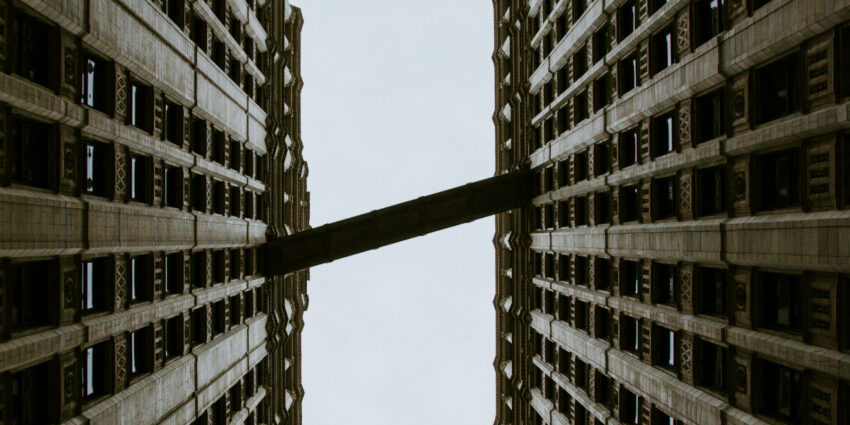A Guide to Chicago Oldest Buildings and Their Stories

Chicago’s architectural story is one of reinvention, innovation, and resilience. And while the city is perhaps best known for its modern skyline and glassy high-rises, the roots of old Chicago architecture still anchor the city in history. For those fascinated by the details etched into stone facades or the whispered stories of buildings that survived the Great Fire, a deeper look into Chicago old architecture offers an extraordinary history lesson.
In fact, if you’re hoping to see some of these historic sites from a unique vantage point, we suggest incorporating a Chicago architecture boat tour early in your itinerary. It’s an ideal way to contextualize the buildings you’re about to learn more about, all while cruising comfortably along the city’s scenic waterways.
The Rookery Building (1888)
Nestled in the heart of the Loop, The Rookery is not just one of the oldest buildings in Chicago, it’s also one of the most iconic. Designed by Burnham and Root and later renovated by Frank Lloyd Wright, this structure showcases a seamless blend of Romanesque and early modern styles. Step into the light-filled atrium to witness a striking example of the transitional period in American architecture.
Holy Name Cathedral (1875)
As one of the few churches to survive the Great Chicago Fire, Holy Name Cathedral is a living monument to the city’s resilience. Its Gothic Revival style, complete with ornate woodwork and stunning stained glass, is a must-see for lovers of Chicago old architecture. It also holds a notorious spot in Chicago building history, having been the site of numerous historical events, including mob-related activity during the Prohibition era.
The Monadnock Building (1891–93)
Split into two halves that represent different phases in architectural progress, the Monadnock Building is a fascinating study. Its northern half, designed by Burnham and Root, is the tallest load-bearing brick building in the world. The southern half, designed by Holabird and Roche, incorporates early steel-frame construction. This duality makes it a key stop on any tour exploring Chicago’s unique architecture.
Old St. Patrick’s Church (1856)
One of the few buildings to survive the fire of 1871, Old St. Patrick’s Church stands as a spiritual and architectural relic. Designed in the Romanesque Revival style, it’s one of the most stunning examples of classic Chicago architecture still in active use. Its interiors, adorned with Celtic motifs and vibrant colors, reflect the strong Irish-American heritage that helped shape early Chicago.
The Palmer House (1871)
Originally built in 1871 and rebuilt after the Great Fire, the Palmer House is a living emblem of the city’s resilience. Its lavish interiors (featuring Tiffany chandeliers, a stunning frescoed ceiling, and opulent gold trim) make it an extraordinary example of Gilded Age luxury. It’s not just a hotel; it’s a monument in Chicago building history.
Glessner House (1887)
A National Historic Landmark, the Glessner House was designed by famed architect Henry Hobson Richardson and stands as one of the earliest examples of domestic architecture, breaking away from traditional Victorian styles. Its stark granite facade and fortress-like shape give it a distinctive character—one that has earned it a stronghold in the world of architecture.
Union Station (1925)
Though newer compared to some of the other entries on this list, Union Station deserves mention for its Beaux-Arts grandeur and role in Chicago building history. It replaced the original Union Depot from 1881 and remains a transportation hub and architectural marvel. Its massive Great Hall and stately colonnades make it one of the most photogenic sites in the city.
Water Tower and Pumping Station (1869)
Located on the Magnificent Mile, the Chicago Water Tower and Pumping Station are iconic survivors of the Great Fire and symbols of the city’s perseverance. The limestone structure with its castle-like appearance is among the most famous Chicago oldest buildings, making it a staple on nearly every sightseeing tour.
Historic Neighborhoods
Beyond individual buildings, whole neighborhoods in Chicago offer snapshots of the city’s evolving architectural story:
- Pullman District: This planned industrial community built in the 1880s still features intact rowhouses and public buildings that speak to the company town concept. Learn more through the Pullman National Historical Park.
- Old Town: Cobblestone streets and Victorian-era homes make Old Town a haven for lovers of old architecture.
- Bronzeville: Once known as the “Black Metropolis,” Bronzeville is home to landmarks of the Great Migration era, such as the Supreme Life Building and Overton Hygienic Building.
Experience it All from the Water
What about some riverfront landmarks? Chicago offers a striking visual contrast that captures the evolution of Chicago’s skyline. The Wrigley Building, with its white terra cotta façade and clock tower, is an elegant nod to early 20th-century design. Completed in the 1920s, it stands as a symbol of the city’s commercial boom. Just next door, the sleek Trump International Hotel and Tower, completed in 2009, reflects the city’s modern architectural ambition. Together, they highlight how Chicago continues to build upward while honoring its past.
If wandering the city on foot isn’t your style, don’t worry! You can still enjoy an in-depth look at these architectural marvels from a comfortable seat on the Chicago’s Best 90-Minute Architecture Boat Tour. With guided narration, incredible skyline views, and access to all three branches of the Chicago River, this tour is a relaxed but enriching way to take in Chicago old architecture.
Whether you’re a history buff, an architecture enthusiast, or just someone who loves a good skyline, exploring classic architecture gives you a new appreciation for how far the city has come — and how much of its past still lives on. Don’t just look up at the skyscrapers; look closely at the corners, the bricks, the stories. There’s a whole world built into the walls of Chicago, and it’s waiting for you to explore it.